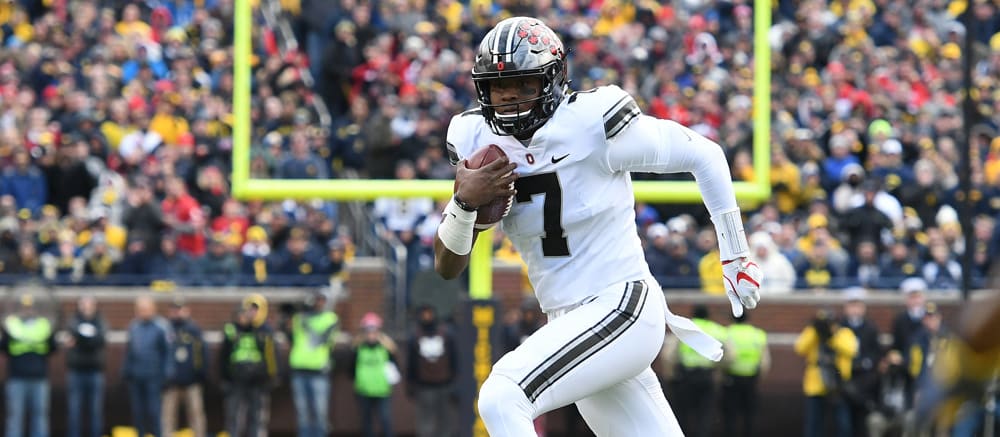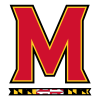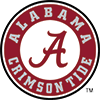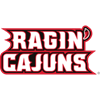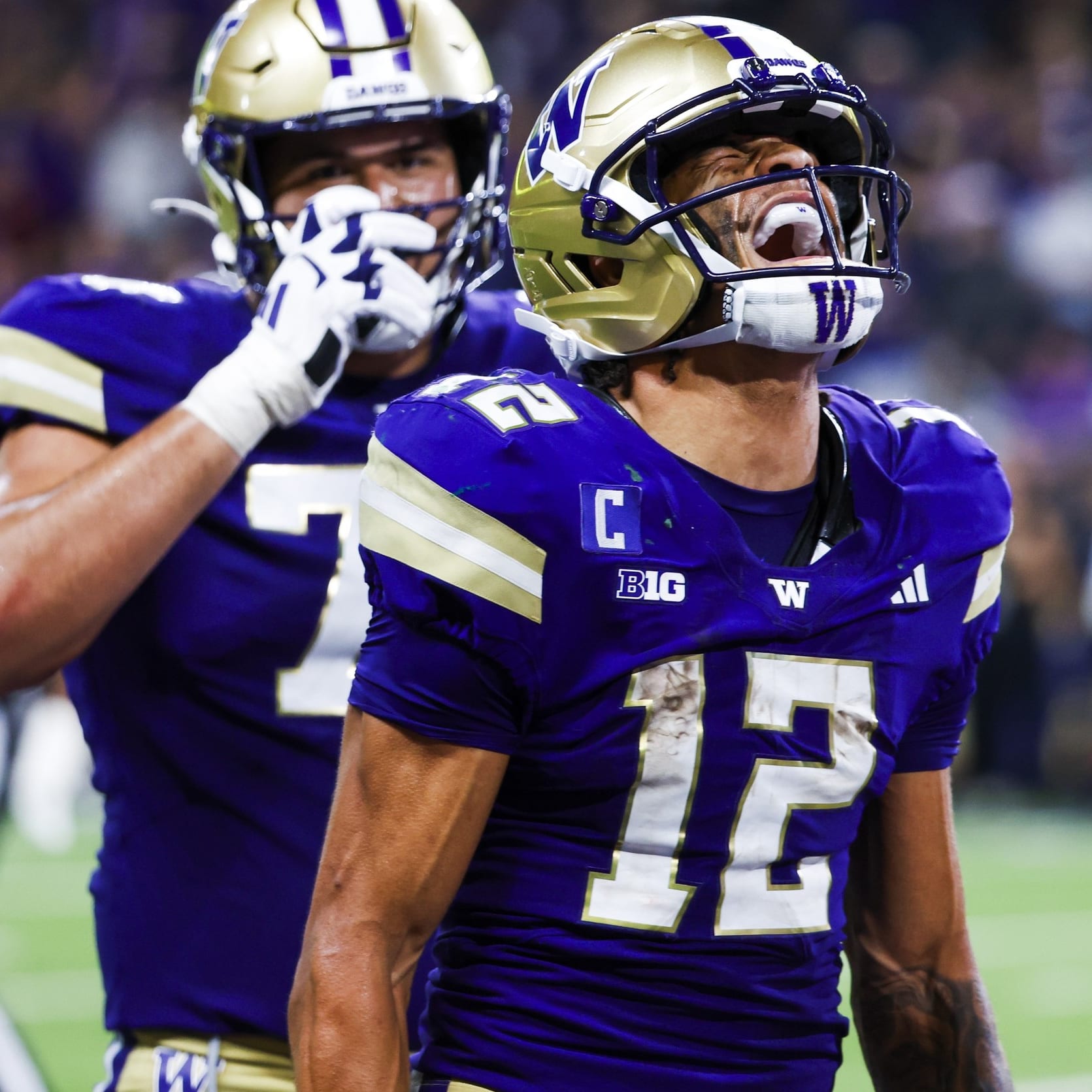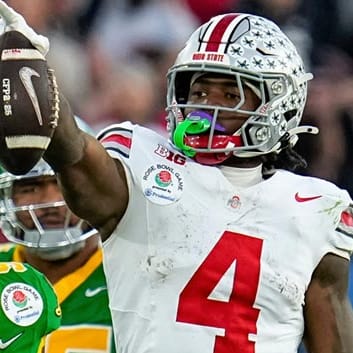The NFL Fan's Viewing Guide to Bowl Season
To some, bowl season is just background noise or an excuse to poke fun at the ridiculous sponsors on some of these games. And yes, while the Cheribundi Tart Cherry Bowls of the world do have funny names, they also provide a stage for football fans to get a look at some future NFLers that will be making fantasy football waves.
Of course, there's a recent trend of high-profile juniors and seniors smartly opting to sit out of these exhibition games to avoid the injury risk that can prove costly to their respective draft projections. The likes of Will Grier (QB, West Virginia), N'Keal Harry (WR, Arizona State), Noah Fant (TE, Iowa), Kelvin Harmon (WR, NC State), Deebo Samuel (WR, South Carolina), Justice Hill (RB, Oklahoma State), and Darrell Henderson (RB, Memphis) will all be sitting out of their bowl games, but there are still plenty of promising pro prospects that will be on display throughout bowl season.
The purpose of this article is to give you breakdowns of the best draft-eligible players ranging from the big names to the under-the-radar guys that will be rising up big boards through the pre-draft process.
Quarterback
First Round Prospects
Frankly, it's a bad year to need a quarterback in the first round. The 2019 class doesn't hold a candle to what 2018 brought to the table with five first-round signal-callers. The two best are Ohio State's Dwayne Haskins (Rs. So) and Oregon's Justin Herbert (Jr.). However, there's a realistic possibility that one or both return to school next year, particularly in Herbert's case. Here's what each of these two are up against in their respective bowl games.
Dwayne Haskins (vs. Washington in the Rose Bowl, Jan. 1)
Haskins (6-3, 218) is an elite talent and easily the best quarterback prospect Ohio State has produced since I can remember. He is a true pro-style quarterback with standout anticipation, ball placement, and arm strength. In just his first year as the starter, Haskins completed 70.2 percent of his passes with a 9.2 YPA along with 47 touchdown passes against just eight picks.
The factor to monitor in the upcoming bowl is how Haskins handles Washington's pressure. Not to say that Haskins' production is solely the result of his supporting cast and system, but it's worth noting that he was pressured on the lowest percentage of dropbacks (19.8 percent) of any Power Five quarterback this year (per Pro Football Focus). Washington only ranked 91st in FBS in sacks, but that's not the only true measure of disrupting the opposing quarterback. Seeing how Haskins handles Washington's pressure and how he adjusts to the Huskies' elite secondary will be the biggest on-field storyline in the Rose Bowl.
Bottom line: Haskins' upcoming draft decision will have the biggest first-round impact of any eligible offensive player.
Justin Herbert (vs. Michigan State, RedBox Bowl, Dec. 31)
Herbert is perhaps the "toolsiest" of the quarterback prospects in this year's class. He checks all the boxes. Herbert is 6-foot-6, 233 pounds with outstanding mobility and athleticism for a player his size. After starting parts of three seasons at Oregon, some may feel he has little left to prove, especially considering his 2018 season with 2,985 yards and 28 passing touchdowns.
There are some questions to Herbert's game, however. His play style is reckless at times and he opens himself up to taking big shots thanks in part to his big frame. In other words, Herbert could stand to pick his spots better when he's that big a target for defenders. Herbert also has the habit of trusting his arm too much and forcing passes into tight windows when the situation doesn't call for it.
He'll be facing a big name defense in the bowl game with Michigan State on tap. Michigan State holds opposing quarterbacks to just a 6.2 YPA (22nd) and has more interceptions (14) than touchdowns allowed (13).
Herbert has been largely mum on the possibility of leaving Oregon early. A Eugene, Oregon native, it wouldn't be shocking for him to return to college for his senior season and work on the aforementioned areas that need improvement.
Still, with the way premium quarterbacks are valued, Herbert would almost certainly be a top-10 selection in this year's draft even with his warts, so how much could he realistically improve his stock by coming back for another year? Looking ahead, Herbert would likely fall out of QB1 consideration in 2020 if Alabama's Tua Tagovailoa and Georgia's Jake Fromm declare.
Herbert may be a developmental prospect, but his tools and current draft projection are good enough to where the RedBox Bowl ought to be his farewell to the college ranks.
Second and Third Tier
Drew Lock, Missouri (vs. Oklahoma State, Liberty Bowl, Dec. 31)
If you polled a room of draft analysts, no two opinions would be the same regarding Lock as an NFL prospect. His backers would point to his rocket arm, frame (6-4, 225), and four years of starting experience. You could even go a step further and note that Lock improved his accuracy in a pro-style system under offensive coordinator Derek Dooley in 2018, showing that he doesn't need the wide-open spread offense to thrive.
Lock's doubters can point to scatter-shot accuracy (sub-60 percent completion rate) his first three years as a starter, mistake-prone moments in his decision making process, and bad career splits against quality opponents (he just got his first SEC road win this season).
In terms of Lock's upcoming bowl game, there's little reason to doubt that he'll tear it up in his collegiate finale. Oklahoma State's offense will keep the pressure on Missouri to score and its defense ranks 84th in S&P+, so Lock should have no trouble picking them apart. Look for Lock to put out some good tape in his last college game to kick off a draft-season rise that could elevate him to Day 2 status.
Ryan Finley, North Carolina State (vs. Texas A&M, Gator Bowl, Dec. 31)
Finley is a player whose NFL appeal has always been over my head. He's a fine college quarterback to be sure, having thrown for more than 3,000 yards in each of his last three seasons. Finley (6-4, 212) has an NFL frame but the arm is lacking and he has wilted time and again when facing quality opponents.
With Finley, there's also the question as to whether he's already maxed out his potential. He'll be 24 as a rookie with average tools and might just be another Connor Cook-type when he goes through the NFL evaluation process. A matchup against Texas A&M without his best receiver -- Kelvin Harmon -- may lead to Finley fizzling out in his final game at NC State.
Daniel Jones, Duke (vs. Temple, Independence Bowl, Dec. 27)
Jones (6-5, 220) is essentially a poor man's Justin Herbert. Athletic, mobile, and tough with a big frame, Jones has some traits that'll play well at the next level. There are also some major concerns, too. Not that he was surrounded by a star-studded cast at Duke, but a career 6.3 YPA over 1,234 career passes doesn't exactly scream "first rounder."
In fact, there's not much you can point to in terms of his production profile that suggests he'll be a future starter in the NFL. He never threw for more than 17 touchdowns and his career-high passing total is 2,836, which he reached in his first year as a starter.
Of course, it's not all about numbers. But there aren't many starting quarterbacks in the NFL with those types of numbers in college. So with that, his backers will have to lean heavily on his film to make his case. Frankly, I'm not sold enough that there's enough there to warrant the Day 1 billing he's gotten in some circles. He's fine, but not projectably great. Of course, as a potential NFL prospect, he does make Duke's bowl game against Temple exponentially more watchable.
K.J. Costello, Stanford (vs. Pittsburgh, Sun Bowl Dec. 31)
He doesn't get a ton of buzz, but Costello has the frame, the tools, and the numbers to warrant some draft discussion. As we've established, it's a weak class at the position while next year's crop could be loaded.
Costello (6-5, 215) took a major leap forward this year, completing 66.4 percent of his passes for 3,435 yards (8.7 YPA), 29 touchdowns, and 11 interceptions after being held under a 60 percent completion rate with a 7.5 YPA as a redshirt freshman. With running back Bryce Love's utter disappearance from the spotlight (more on that later), Costello deserves credit for delivering Stanford to an eight-win season when it had to change its offensive identity on the fly. He'll likely return to school given his current status as a Day 3 prospect, but there's plenty to like about Costello.
Running Back
We might not see a running back taken in the first 10 picks for the first time since 2014. Heck, we might not see a running back taken in the first round, period. To say this is a weak crop is an understatement. As for bowl watching purposes, the Darrell Henderson's decision to sit out against Wake Forest is smart on his part but it deprives us of seeing a guy with an 8.9 YPC tear it up one last time at the college level. Looking elsewhere around the bowl slate, we have a number of talented runners who might be hovering just below the national consciousness that should end up hearing their names called at the draft this spring.
Top Tier Talents
Damien Harris and Josh Jacobs, Alabama (vs. Oklahoma, College Football Playoff, Dec. 29)
Oklahoma is going to have its hands full trying to stop either Harris or Jacobs. Both Jacobs and Harris have elite recruiting pedigrees to go with strong collegiate production. Jacobs (5-10, 216) ran for 11 touchdowns this season and was also extremely efficient as a pass-catcher over his three seasons at Alabama with 43 catches on 52 targets for 495 yards (9.5 YPT) and four touchdowns. Harris (5-11, 215) entered the season as the likely RB1 in the 2019 draft and can still wind up there. He averaged 6.1 YPC and racked up seven rushing scores this season and consistently shows immense play strength and runs low with a good forward lean.
When it comes to this game, it should be open season on this Oklahoma defense. Alabama's passing game may draw the bulk of the headlines, but look for these two to play a major role against a Sooner run defense that gave up 31 rushing scores.
From an NFL perspective, one of the best things going for these two is the relatively light workload for both players over their collegiate careers. Jacobs has never had more than 94 carries in a season and Harris has never seen more than 146. Harris is almost certainly a top- three running back in this class while Jacobs could have a meteoric rise up boards should he decide to leave early.
Elijah Holyfield, Georgia (vs. Texas, Sugar Bowl, Jan. 1)
Much like Jacobs and Harris, Holyfield has extremely fresh legs for a third-year junior. He not only sat behind Nick Chubb and Sony Michel for his first two seasons, he also split carries with sophomore D'Andre Swift this season. The timeshare didn't stop him from rumbling over opposing defenses for 956 yards on 147 yards (6.5 YPC). Power is Holyfield's calling card -- I mean, he is Evander Holyfield's son after all -- but he brings a surprising bit of burst for a player with his frame. He'll be facing a Texas defense that was fairly stingy against the run (3.88 YPC allowed) and ranked 44th in S&P+.
Most will be looking at Georgia's backfield with an eye on Swift, who may be a future first-rounder when eligible. Don't let that fool you into thinking that Holyfield (5-11, 215) can't steal the show in what may be his final game at Georgia. If he does opt to forgo his senior season, Holyfield could sneak his way into Day 2 consideration in the spring.
Second and Third Tier
Benny Snell, Kentucky (vs. Penn State, Citrus Bowl, Jan.1)
Snell already announced that he's NFL bound, so this will be our last chance to catch him as a Wildcat. A productive and powerful runner, Snell (5-11, 223) is the only player in school history with over 1,000 rushing yards in each of his three seasons and managed to do so despite defenses selling out to stop him with Kentucky not posing any threat in the passing game.
Snell will face questions about his game translating to the next level, and one game won't be enough to sway that. He has 29 career catches across three seasons and relies more on his power than any sort of breakaway speed or quick-twitch agility. As it stands, Snell projects as a late-Day 2 or early-Day 3 prospect that will never come close to being the workhorse he was in the college ranks. It's not necessarily Snell's fault -- his game could've been dominant in the earlier part of this century -- but the fact remains that the modern day NFL is becoming less reliant on backs like him.
With that, let's enjoy Snell's final ride as he takes on a Nittany Lion defense that lags behind what has been in recent years.
Bryce Love, Stanford (vs. Pitt, Sun Bowl, Dec. 31)
Not to be overly harsh, but Love's decision to return to Stanford for his senior season couldn't have turned out much worse from a football perspective. In 2017, he managed to tear off 8.1 YPC and 19 touchdowns despite a nagging ankle issue over the final stretch of the season. Love's 2018 saw his YPC dip to 4.5 as he finished with 739 yards -- 12th in the PAC-12.
An optimist would explain away Love's lackluster 2018 by noting that he was dinged up for most, if not all, of the year. My counter: what makes you think it'll be easier to stay healthy over a 16-game NFL season?
Love will have a chance to leave on a high note against a mediocre Pitt run defense (71st in S&P+), but nothing he's done this season guarantees such a storybook ending. The ex-Heisman finalist leaves college as a Day 3 prospect.
David Montgomery, Iowa State (vs. Washington State, Alamo Bowl, Dec. 28)
Montgomery entered the year with some buzz as a possible top-50 pick and largely delivered. He's not flashy (4.7 YPC in 2018) but he's consistent and reliable, having played in every game in his Iowa State career. Montgomery racked up a career-best 12 rushing scores and notched his second consecutive 1,000-yard season.
Montgomery's backers focus mostly on his tape and point to his ability to finish runs and always fall forward. They also defend his low YPC by pointing to Iowa State's subpar offensive line. His detractors point to a noticeable lack of explosiveness. Even if you cut Montgomery some slack with the offensive line narrative, a grand total of nine runs 20-plus yards over the course of 231 carries is at least a little worrisome with regards to him escaping NFL tacklers.
Things are setting up well for Montgomery in this bowl game and I'm expecting him to put together a solid performance in what should be his final college game. Washington State ranks 96th in S&P+ against the run despite being able to hold opposing rushers to 4.02 YPC. That 4.02 mark is helped by sack yardage and some poor competition along the way. The best rushers the Cougs have faced have all feasted; Washington's Myles Gaskin and Oregon State's Jermar Jefferson each ran for at least 140 yards and three scores on Washington State.
Montgomery can catapult himself back into the conversation as a top-five back in this class with a strong performance, but he will be a polarizing figure between the metrics and the film communities throughout the draft process.
Dexter Williams, Notre Dame (vs. Clemson, College Football Playoff, Dec. 29)
Williams doesn't get nearly the respect he deserves compared to his peers in this class, especially when so many other bigger names at the position flopped in 2018. After a four-game suspension to start the season, the senior took the lead in a talented backfield and ran for 941 yards and 12 touchdowns on 6.63 YPC.
A big game against Clemson will not only be crucial for Notre Dame's chances of hanging with the Tigers, it'll also prove that Williams is able to cut it against NFL-caliber competition. Clemson's front is loaded with future first-rounders and was dominant against the run as a unit, allowing an FBS-low 2.4 YPC. Williams (5-11, 215) will need to lean on his explosive acceleration to make it happen.
Trayveon Williams, Texas A&M (vs. North Carolina State, Gator Bowl, Dec. 31)
Another back generating surprisingly little buzz, Williams is coming off a 1,500-yard, 15-touchdown season and has been productive since he stepped on campus in 2016 with two 1,000-yard campaigns to his credit. Williams' issue, from a pro perspective, is that his physical style is unlikely to translate to the NFL at his size (5-9, 200). The list of players at that size to have sustained success in the NFL is rather short; Brian Westbrook would be a best-case scenario, but a Javon Ringer might be a more likely outcome.
In either case, Williams is a fun player to watch, and if this is it for him in college, I expect him to go out in style even against a strong Wolf Pack run defense.
Other Runners to Watch
Darrin Hall and Qadree Ollison, Pitt (vs. Stanford); Karan Higdon, Michigan (vs. Florida); James Williams, Washington State (vs. Iowa State); Myles Gaskin, Washington (vs. Ohio State); Mike Weber (vs. Washington); Alexander Mattison, Boise State (vs. Boston College)
Wide Receiver
For fantasy purposes, wide receiver is the best position group in this year's class. Unfortunately, many of the top-rated ones in this class have already played their final games. Mississippi's bowl ban continues in 2018 so we won't get to see A.J. Brown or D.K. Metcalf. Looking elsewhere, the aforementioned absence from N'Keal Harry(Arizona State) and Kelvin Harmon (NC State) takes some of the juice out of their respective bowl games, but there will still be plenty of receiving talent on display this bowl season.
Top-Tier Talents
Marquise Brown, Oklahoma (vs. Alabama, College Football Playoff, Dec. 29)
For my money, Brown might be the most exciting receiver in college football. Undersized and scrappy, Brown plays much bigger than his 5-foot-10, 168-pound frame. Brown's calling card is his speed; he not only torches teams on the deep ball, he can also turn a simple screen or comeback route into six points. His open field vision is rare as well.
Brown profiles as a top-five receiver in this class as it stands, though there will be legitimate questions as to whether a player with his frame can hold up at the next level. Going up against Alabama's big and physical secondary won't definitively answer that question one way or the other, but it'll still serve as a decent litmus test nonetheless. Brown vs. Alabama's defense is going to be one of the best in-game matchups in the entire bowl season.
Emanuel Hall, Missouri (vs. Oklahoma State, Liberty Bowl, Dec. 31)
Hall is a player I've had my eye on since last year when he outperformed teammate and future draft pick J'Mon Moore. He has good size at 6-foot-2 and 200 pounds and has been a bona fide deep threat since carving out a prominent role in 2017. Hall was nicked up with a hamstring injury this season but still managed to average 21.6 yards per reception and 14.0 YPT, which ranked fourth among receivers with at least 40 targets.
As mentioned above, Missouri is squaring off against a sieve of an Oklahoma State defense. Hall should have no trouble taking the top off this secondary and maintaining his explosive YPT mark. On the other side of this game we have the explosive Tylan Wallace, but we'll worry more about him next year.
The Big Boys
NFL teams looking for a big receiver are in luck this cycle. Texas' Collin Johnson, Iowa State's Hakeem Butler, and Stanford's J.J. Arcega Whiteside all bring unique traits of their own, but all of them cause problems for defenders with their size.
In Johnson (vs. Georgia, Sugar Bowl, Jan.1) we have a player at 6-foot-6 and 210 pounds with smooth athleticism. He's impressive in his route running and uses every bit of his frame to go up and get jump balls. His matchup against Georgia's Deandre Baker will be the best in-game matchup in the Sugar Bowl.
Butler (vs. Washington State, Alamo Bowl, Dec. 28) has a lot of similarities to Johnson, but isn't quite as polished. His catch rate (51.5 percent) leaves a lot to be desired and he can have trouble separating off the line at times. When he does get his mitts on the ball...look out. Butler (6-6, 225) averaged 22.1 yards per reception this season and was impressive after the catch at times. In a game like the Alamo Bowl where offense always reigns supreme, Butler is a true threat to take over the game with his rare blend of size and athleticism.
When it comes to Arcega-Whiteside (vs. Pitt, Sun Bowl, Dec. 31), I'm not sure there's a better jump-ball specialist in this class. Clemson's Mike Williams (2016 vintage) comes to mind in terms of being able to get the ball in traffic and in the red zone. Arcega-Whiteside (6-2, 222) hauled in 14 touchdowns on 60 catches (91 targets) and nine of those touchdowns came inside the opponent's 20.
Small School Receiver to Know: Anthony Johnson, Buffalo (vs. Troy, Dollar General Bowl, Dec. 22)
Johnson (6-2, 207) began his Buffalo career in 2017 and has produced massive numbers over the last two season. He combined for 128 catches (222 targets) for 2300 yards and 25 touchdowns over that span despite missing two games in 2018 with a hamstring injury. He projects as a Day 3 pick right now and a big game against Troy alone won't change that. Still, Johnson has the frame and skill set to play on Sunday's and this is your last shot to see him before he heads to the next level.
Others to watch: Mecole Hardman and Riley Ridley, Georgia (vs. Texas); Bryan Edwards, South Carolina (vs. Virginia); David Sills V, West Virginia (vs. Syracuse); Denzel Mims, Baylor (vs. Vanderbilt); Parris Campbell, Ohio State (vs. Washington)


